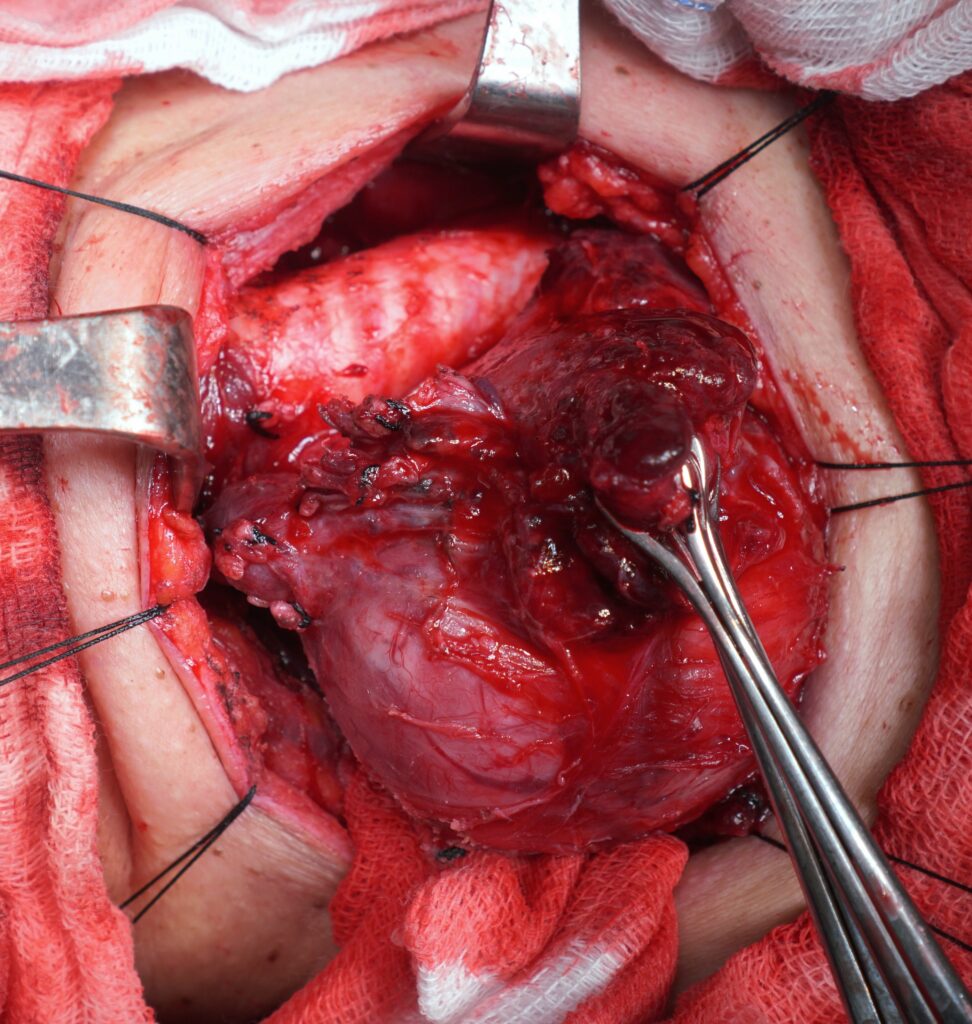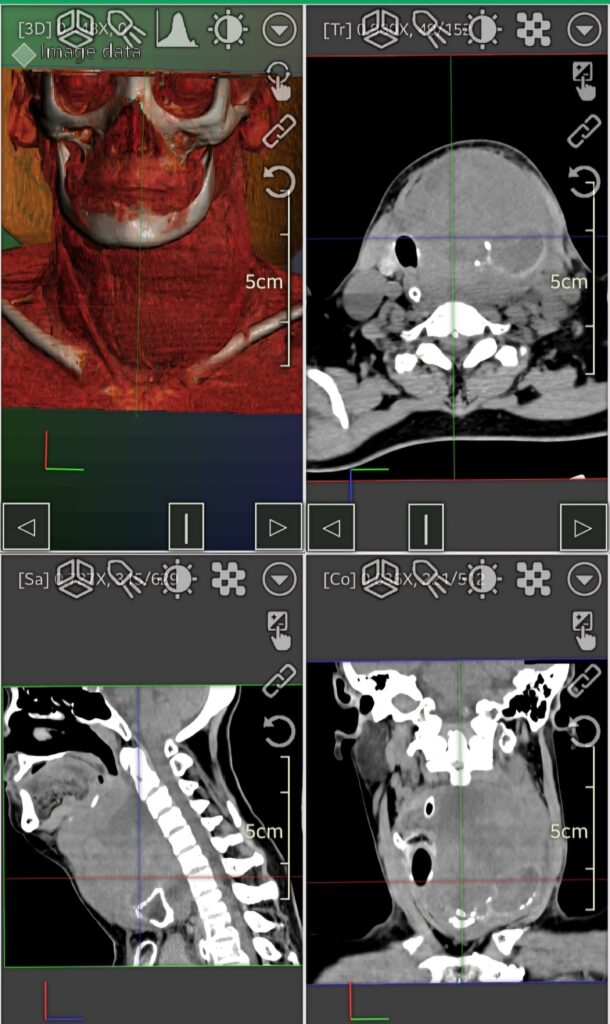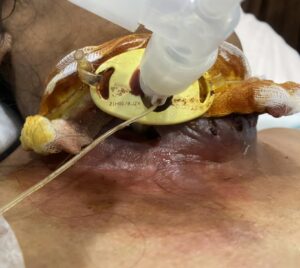As discussed in this blog, thyroid cancers may range from “friendly” to aggressive. In this blog, we will discuss the rarest subtype: anaplastic thyroid carcinoma (ATC). Known for its aggressive nature, ATC poses significant challenges in both diagnosis and treatment. In this blog, we’ll explore the characteristics of ATC and the ongoing efforts to combat this formidable cancer.
What is anaplastic thyroid cancer?
Anaplastic Thyroid Cancer (ATC) is a rare and aggressive form of thyroid cancer that arises from the thyroid gland cells. It is also called undifferentiated thyroid cancer because the cells don’t resemble or function like typical thyroid cells.Anaplastic thyroid carcinoma (ATC) accounts for 1–2% of all thyroid malignancies yet it causes up to 40% of deaths from thyroid cancer, hence it is rare but very aggressive.
(picture on the right shows a case of ATC for total thyroidectomy)

What are the causes and symptoms of anaplastic thyroid cancer?

While the exact cause remains unclear, certain risk factors, such as older age, radiation exposure, and a history of goiter or thyroid disease or untreated thyroid cancer, may increase the likelihood of developing anaplastic thyroid cancer.
(picture on the left shows intra operative picture of anaplastic thyroid cancer. note that the windpipe is deviated to the left side by the hard firm thyroid cancer)
Unfortunately, ATC is often diagnosed late due to its rapid growth and lack of specific symptoms in the early stages. By the time symptoms such as a rapidly growing neck mass, difficulty swallowing or breathing, hoarseness, and weight loss appear, the cancer has typically advanced significantly and spread to nearby structures, or metastazied elsewhere in the body.
What are the treatment strategies for anaplastic thyroid cancer?
Diagnostic tests for anaplastic thyroid cancer typically include imaging studies such as ultrasound, CT scans, or MRI to evaluate the extent of the disease and detect any spread to nearby tissues or lymph nodes. Fine-needle aspiration biopsy may also be performed to obtain a tissue sample for examination under a microscope.
Once diagnosed, treatment options for anaplastic thyroid cancer usually involve a combination of surgery, chemotherapy, and radiation therapy.
(picture on the right shows a neck CT scan of a late stage anaplastic thyroid cancer pushing the windpipe to the right)


Surgery aims to remove as much of the tumor as possible, though complete resection is often challenging due to the cancer’s aggressive nature. When resection is not achievable, an incision biopsy and tracheostomy and feeding tube insertion are done for palliative care.
In cases where majority of the tumor is removed with surgery, Chemotherapy and radiation therapy are used to target any remaining cancer cells and help prevent recurrence or spread.
How long will a patient with anaplastic thyroid cancer live?
Anaplastic thyroid cancer carries a grim prognosis. On average, people diagnosed with this cancer typically survive for about 6 to 8 months after they find out they have it.
The 5-year survival rate is extremely low, ranging from 0 to 10%.

Despite aggressive treatments such as surgery, chemotherapy, and radiation therapy, the prognosis remains poor, with a high likelihood of mortality within the first year post-diagnosis. Sometimes, the patients end up with painful long suffering because of the aggressive nature of the tumor, before eventually dying. Overall, ATC presents significant challenges in management and outcomes due to its aggressive nature and limited treatment options.
Future Research for ATC?
Controversies and challenges abound in the treatment of anaplastic thyroid cancer (ATC), largely due to its aggressive nature and poor prognosis. Research efforts are focused on developing more effective therapies, such as targeted molecular agents and immunotherapy, to improve survival rates. Despite statistics painting a grim prognosis, ongoing research offers hope for advancements in treatment modalities that may ultimately extend survival and improve quality of life for ATC patients. Collaborative efforts between researchers, clinicians, and patients will continue to drive progress in the field, aiming to change the trajectory of this devastating disease.
Experience expert ENT surgical care tailored to your needs.
Book now to schedule your appointment with a skilled ENT surgeon near you and take the first step towards a healthier you.
Your well-being is our top priority.

